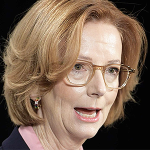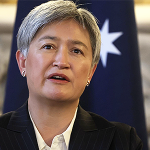The US Democrats have made a high-stakes bet on securing the female vote by choosing Kamala Harris as their candidate. But is this how voting preferences work?
A week since Kamala’s nomination, US politics has revolved around diversity and a gender-focused narrative.
Kamala has tried to appeal to diversity and, most importantly, her identity as a woman. Almost immediately after her endorsement, she aligned herself with various women-led political groups such as the National Organisation for Women (NOW), the National Women’s Political Caucus, She Should Run, Higher Heights, Run Sister Run, Women for American Values and Ethics (WAVE), and Her Bold Move, Win With Black Women, the list goes on.
Kamala has gone out of her way to appeal to particularly left-leaning women. She even participated in a ‘white women’ Zoom call, despite not being white herself. This call was mockingly dubbed ‘Karens for Kamala’ by actress Connie Britton. Adding to Kamala’s gender narrative, a video from May has surfaced showing Drew Barrymore almost begging Kamala to be a ‘Mamala’ of the country.
If Kamala’s only offering against the Trump-Vance team is her gender, the outlook for her election is grim. A large body of academic research from the UK, Europe, and the US showed that women would not vote for women merely based on gender.
Kamala’s initial instinct to appeal to similarities between herself and the electorate was correct. Indeed, voting preferences are better explained by the match in socio-economic characteristics. For example, individuals from lower socio-economic backgrounds tend to prefer candidates who also grew up in tougher conditions.
However, this logic does not apply to gender. Analysis of voting behaviour published by British scientists shows that the impact of gender is either mixed or non-existent. European researchers who looked into the so-called gender voting gap indicate that women voted slightly more conservatively before the 1970s and slightly more left afterwards. These studies also note that this gender gap in voting is more accurately explained by socio-economic characteristics.
There is no solid evidence that women vote for women simply because they are women. In reality, successful college-educated women, whom Kamala desperately tries to appeal to, have more in common with Vance than Kamala. Vance is self-made, and ambitious, and went first to Ohio University and then to the prestigious Yale. Hence, they are more likely to vote for the Trump and Vance team.
Whether Kamala reconsidered her strategy on the female vote or decided to double down on gender politics, her next move was to portray Vance as someone who hates women. She tried a similar tactic with Trump, claiming she knew ‘his kind’ from her work as a prosecutor but quickly shifted focus to targeting Vance to destabilise the team.
The Democrats have had to dig back three years to find something remotely controversial about Vance. His comments about ‘cat ladies’ became a political bombshell. CNN’s political commentator SE Cupp went so far as to suggest that Vance wanted to ‘punish’ childless women and not just hate them.
What Vance had actually said was that a disproportionate number of decision-makers in the Democratic party do not have families, which is unrepresentative of the American population. He questioned whether it is appropriate for so many politicians to lack family values. This will be a campaign point in the contest between the Trump team and Kamala Harris.
While Kamala is a stepmother of two, she has no children of her own.
While Kamala campaigns on being a ‘woman’, the Republicans it seems will campaign on motherhood.
Ironically, Kamala’s campaign might play into the Republican’s hands. It is the left who often shame stay-at-home mothers and any female life choices other than prioritising career over family. It is the left that allows men into female changing rooms and other safe spaces. Anyone questioning this state of affairs is subject to being cancelled and labelled an intolerant misogynist, regardless of gender. The real question is not whether Kamala wins the female vote, but whether women win by voting for Kamala.








